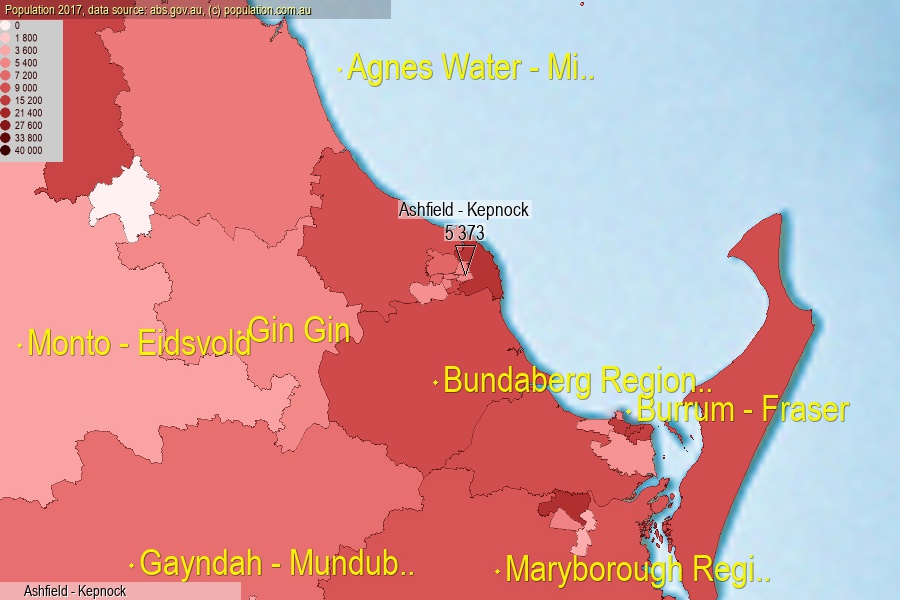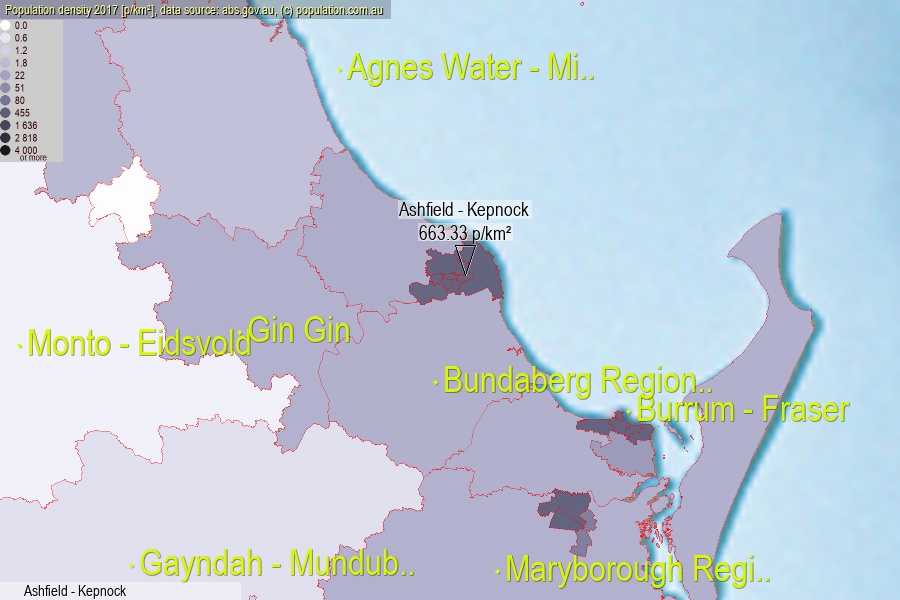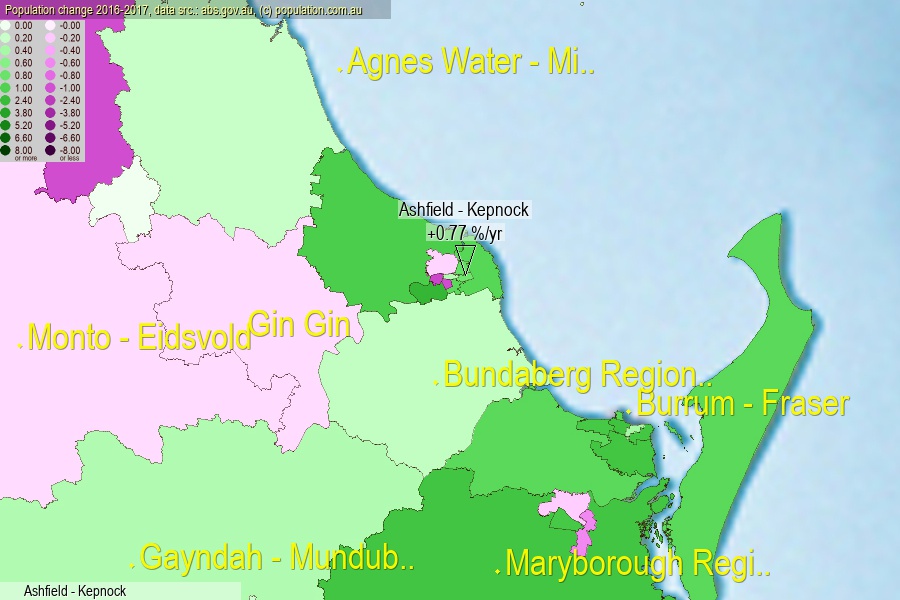 population.com.au
population.com.auLast official estimated population of Ashfield - Kepnock (as Statistical Area Level 2) was 5 373 people (on 2017-06-30)[2]. This was 0.02% of total Australian population and 0.108% of QLD population. Area of Ashfield - Kepnock is 8.10 km², in this year population density was 663.33 p/km² . If population growth rate would be same as in period 2016-2017 (+0.77%/yr), Ashfield - Kepnock population in 2025 would be 5 713. [0]



Click to enlarge. Ashfield - Kepnock is located in the center of the images.
Population [people], population density [p./km²] and population change [%/year] [2]
View borders » (new window) [4]
[1991-1992] +0.34 %/Yr.
[1992-1993] +4.88 %/Yr.
[1993-1994] +4.09 %/Yr.
[1994-1995] +1.44 %/Yr.
[1995-1996] +3.31 %/Yr.
[1996-1997] +2.30 %/Yr.
[1997-1998] +0.02 %/Yr.
[1998-1999] +0.82 %/Yr.
[1999-2000] -0.81 %/Yr.
[2000-2001] +0.42 %/Yr.
[2001-2002] +0.73 %/Yr.
[2002-2003] -0.61 %/Yr.
[2003-2004] +0.02 %/Yr.
[2004-2005] +0.64 %/Yr.
[2005-2006] +0.24 %/Yr.
[2006-2007] +2.76 %/Yr.
[2007-2008] +2.54 %/Yr.
[2008-2009] +2.50 %/Yr.
[2009-2010] +1.83 %/Yr.
[2010-2011] +0.59 %/Yr.
[2011-2012] +1.20 %/Yr.
[2012-2013] +1.36 %/Yr.
[2013-2014] +1.42 %/Yr.
[2014-2015] +0.59 %/Yr.
[2015-2016] +0.23 %/Yr.
[2016-2017] +0.77 %/Yr.
[0] Calculated with linear interpolation from officially estimated population
[1] Read more about SA2 and Australian Statistical Geography Standard (ASGS) on abs.gov.au
[2] Population data from Australian Bureau of Statistics (Population and density: 2017; change: 2016-2017)
[3] Digital Boundaries: Australian Statistical Geography Standard (ASGS) 2016.
[4] Border coordinates are simplifyed using Ramer-Douglas-Peucker algorithm.